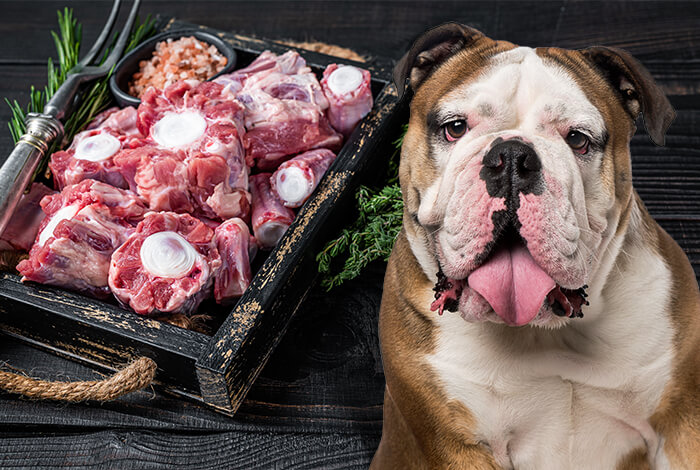![]() Reviewed By Joana Garrido DVM
Reviewed By Joana Garrido DVM
Many safe dog bones for chewing are available on the market. We bring you our top 5 picks and their health benefits. Continue reading to learn which type is the most suitable for your dog and what precautions to take when feeding it to your pup.

1. Chicken feet
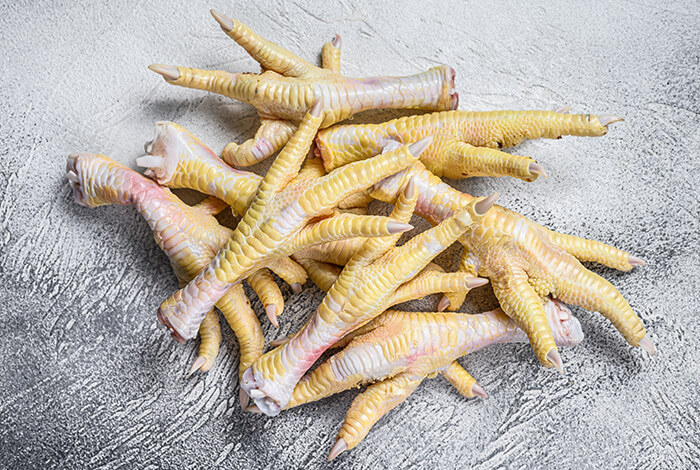
What makes chicken feet good for dogs?
- Chicken feet are great natural dental chews for dogs. Their crunchiness causes gentle brushing on dog’s teeth when chewed. These motions help remove plaque and tartar build-up, which are the common causes of periodontal issues. If your pooch does not get regular tooth brushing, feeding him chicken feet aids in protecting his dental health.
- Chicken feet are collagen-rich and help improve dog skin elasticity. Apart from this, they also hasten hair growth, prevent skin problems, and lessen shedding. Collagen is also crucial for keeping the bones and joints in tip-top shape.
Do chicken feet carry any health risks?
- The nails of chicken feet have sharp points that can potentially injure your dog’s mouth and teeth, and they are also difficult to digest. Therefore, it is highly recommended to snip off the nails before feeding them to your dog.
- Additionally, it’s crucial to ensure proper cleaning of the chicken feet to eliminate any possibility of feces contamination.
Chicken is most suitable for:
- Small to medium-sized breeds can have chicken necks as dog bones for chewing or as an alternative to dog toys. These smaller dogs are less likely to ingest the chicken necks whole, reducing the risk of choking. However, it’s important to be present and supervise your dog while they are chewing to prevent any potential ingestion or choking incidents.
- Chicken necks are safe bone treats for dogs, but they are not durable. If your furry pal is not an aggressive chewer, he will enjoy slowly gnawing on chicken necks. However, if your dog tends to be an aggressive chewer, it’s recommended to opt for more robust chew toys or bones.
2. Deer bones
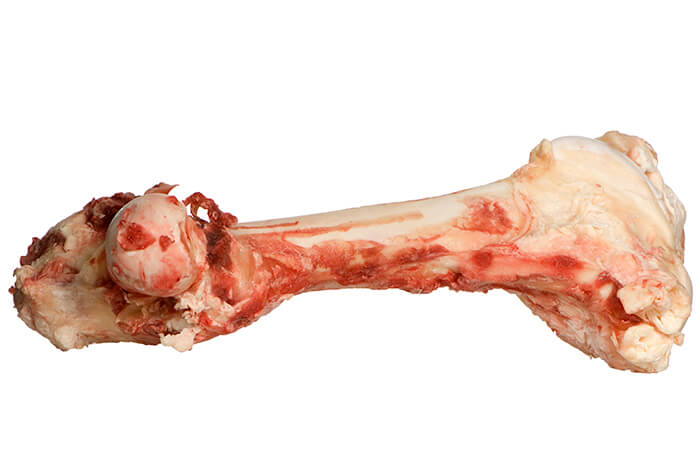
What makes deer bones good chewing bones for dogs?
- Deer bones are rich in proteins and minerals, including calcium, manganese, and iron. These nutrients have a good impact on many body processes of dogs. They promote strong bones, shiny coats, better muscle development, and good blood circulation, among other things.
- Deer bones are considered a novel protein source. Thus, dogs with common protein allergies, such as chicken or beef, can consume these safe dog bones for chewing with a reduced risk of allergic reaction.
Do deer bones carry any health risk?
- When selecting deer bones for your dog, it’s crucial to consider their freshness. Older deer bones have a higher likelihood of accumulating toxins and pollutants over time, which can be harmful to your dog’s health. Therefore, it’s recommended to choose younger deer bones as they are less likely to be contaminated with harmful substances.
- Moreover, it’s important to be aware that chewing on bones, including deer bones, carries the risk of tooth fractures in dogs. To minimize this risk, it’s advisable to monitor your dog while they are chewing on the bones and ensure they are not exerting excessive force.
Deer bones are most suitable for:
- Are you looking for the best bones for small dogs? Deer bones are some of the great animal bones options you can find. Their size is appropriate for small breed dogs.
- With that in mind, although deer bones are safe dog bones for chewing, they are not recommended for large dogs. If accidentally swallowed, deer bones can get stuck in their throat and cause choking.
3. Oxtail bones
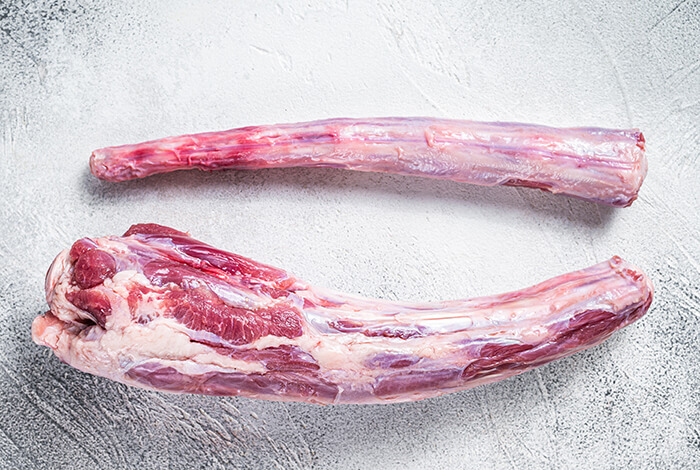 What makes oxtail bones good chew bones for dogs?
What makes oxtail bones good chew bones for dogs?
- Oxtail bones contain high levels of protein and iron. Both are important building blocks for maintaining dogs’ optimum health. Protein provides essential amino acids necessary for tissue repair and muscle development. Iron helps regulate the transportation of nutrients and oxygen throughout the body.
- Oxtail bones come with healthy fatty acids and immune-system boosters that shield dogs from health-deteriorating diseases. These safe dog bones for chewing also have anti-inflammatory properties, which help prevent ailments from cropping up.
- Tooth fractures are the most common problem when letting dogs chew on raw bones. Oxtail bones have a soft, spongy texture; thus, they are less likely to chip your dog’s tooth. They make for a great dog chew toy.
Do oxtail bones carry any health risks?
- Oxtail bones have a fair amount of fat. They are not meant for regular chewing, or dogs may experience digestive upset. If your dog suffers from obesity or has a weak stomach, oxtail bones are not the best choice for him.
Oxtail bones are most suitable for:
The large oxtail bones make them good chew bones for large dogs.
On the other hand, small breeds or puppies will have a hard time chewing on them. For these pooches, opt for smaller chew bones such as alpaca bones.
4. Bison bones
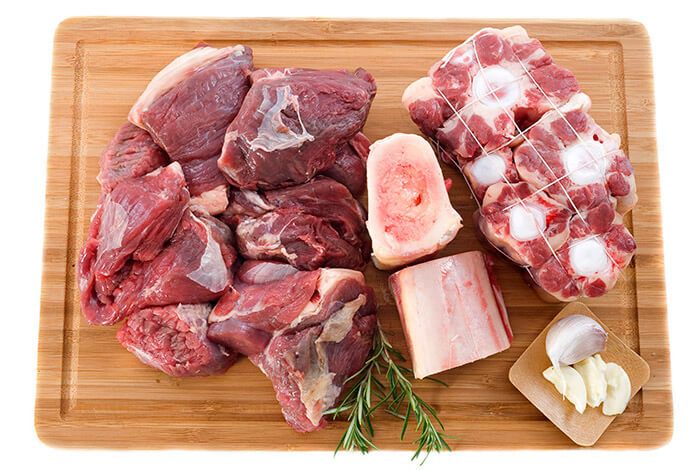
What makes bison bones good chew bones for dogs?
- Bison bones are loaded with protein and are low in cholesterol. They provide your dog an extra boost of energy whilst keeping his blood pressure stable and his cardiovascular system in a healthy condition.
- Bison bones’ protein is naturally rich in CoQ10, a powerful antioxidant. It has many health benefits to canines, including lowering the risk of heart disease, strengthening immune functions, preventing joint pains, and improving oxygen flow within the body.
Do bison bones carry any health risk?
Bison bones are filled with bone marrow that is too rich for dogs and not easily digested. It can cause digestive upset if consumed excessively. To avoid dealing with this health problem, these safe dog bones for chewing should be given to them sparingly.
Bison bones are most suitable for:
For dog owners in search of the best dog bones for aggressive chewers, consider getting bison bones. Their tough texture does not easily give in to the non-stop chewing of these dogs, providing a more mentally stimulating experience. They can be suitable substitutes to regular bully sticks and nylon bones.
5. Chicken necks
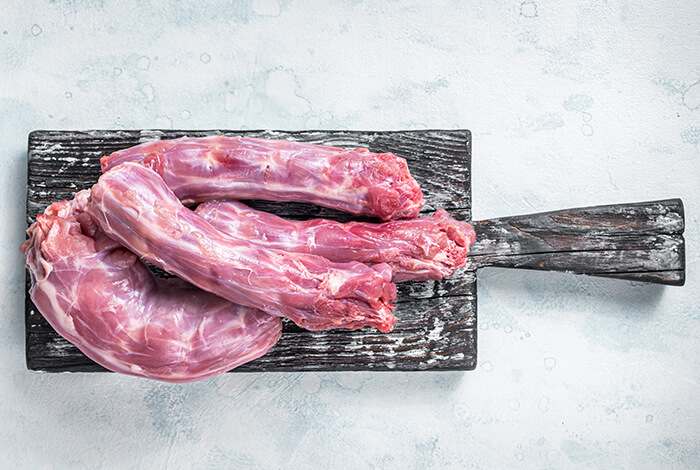
What makes chicken necks good chews for dogs?
- Chicken necks are a good source of nutrients for healthy joints in dogs. Their cartilage and connective tissues are packed with glucosamine and chondroitin, which mitigate joint pains and inflammation. These safe dog bones for chewing can be used as natural supplements for dogs with arthritis and other joint problems.
- Chicken necks contain calcium and omega-3 fatty acids. They facilitate in proper growth and development of a dog’s bones and teeth. Omega-3 fats also protect the heart from cardiovascular diseases and enhance skin and coat quality.
- If you are wondering: “What can I give my dog to chew on that is safe?”, chicken necks are some of the best safe chew bones for dogs. Their bones are soft and highly digestible when served raw. Thus, they will not cause trouble to your dog’s digestive system. Dangerous risks associated with feeding raw bones, such as intestinal blockages, are also less likely to happen.
Do chicken necks carry any health risks?
- Chicken necks are high in fat and can negatively affect dogs’ health if consumed on a regular basis. Digestive issues such as diarrhea, vomiting, and upset stomach may take place.
- Chicken is one of the most common causes of food allergies in dogs. If your dog has this health issue, do not give him chicken necks. They contain plenty of proteins, which houses the allergens that trigger allergic reactions.
Chicken necks are most suitable for:
- Chicken necks are better suited for larger dogs due to their small size, making them a potential choking hazard for small breeds.
- Since chicken necks are easy to tear into, they are not long-lasting chews and are better suited for light chewers. Dogs that love to chew won’t have enough mental stimulation if given chicken necks, as they can consume these safe dog bones for chewing within a few minutes.
Considerations to Keep in Mind Before Purchasing Natural Bones for Dogs
A few things to be mindful of when giving your dog safe dog bones for chewing. Here is a guideline to follow that will keep him safe from potential dangers linked to chew bones:
Never use cooked bones.
Cooked bones are highly prone to splintering into sharp points. If your dog ingests them, he is in for life-threatening consequences. He may sustain painful mouth and throat injuries as well as stomach blockage.
Select raw bones for him instead. They are a lot more durable, thus lessening the chances of breaking apart into small pieces if your furry companion gnaws on them.
Buy from reputable sources.
Bacterial contamination is one of the major concerns when it comes to raw bones. The first step to preventing this health risk is purchasing from trustworthy shops. Dog bones from butchers and local farmer’s markets are great places to look for affordable and best natural bones for dogs.
Don’t forget to check if the product comes from free-range and organic animals. They are healthier sources of raw bones and cow hooves since they are fed natural diets and are less exposed to harmful chemicals such as hormones.
Make sure to clean and sanitize.
Dangerous bacteria and microorganisms can breed in areas where raw bones have come into contact with them. Always wipe surfaces with a dog-friendly disinfectant after your pooch’s chewing session has ended. Wash your hands thoroughly right after.
Don’t allow your dog to lick you after he chomps on raw bones, as his muzzle is likely to have blood or bacteria. Wet a washcloth with warm water and use it to clean his muzzle and paws.
Set a time limit.
Is chewing on a bone bad for dogs? Dogs love to chew, so gnawing on bones isn’t harmful in most cases. This activity keeps your dog busy, provides him with mental stimulation, and keeps him from developing undesirable behavior like destructive chewing.
Having said that, he should not chew on bones for extended periods. Otherwise, it can deteriorate his dental health. The rule of thumb is to remove the dog bone from your dog after 10-15 minutes.
Keep your dog supervised.
Monitor your dog every time he is given a dog bone to avoid unwanted accidents. Recreational bones such as deer, oxtail, bones antlers, and bison bones are not meant for consumption but for chewing. Once they start to splinter or are small enough to fit in your dog’s mouth, take it away from him.
Don’t give too much.
Although safe dog bones for chewing contain vitamins and minerals, they only serve as dog treats, just like dog toys smeared with peanut butter. Avoid using them as a replacement for healthy and balanced nutritional dog food. Generally, dog owners should give their pet no more than 2 raw bones per week.

